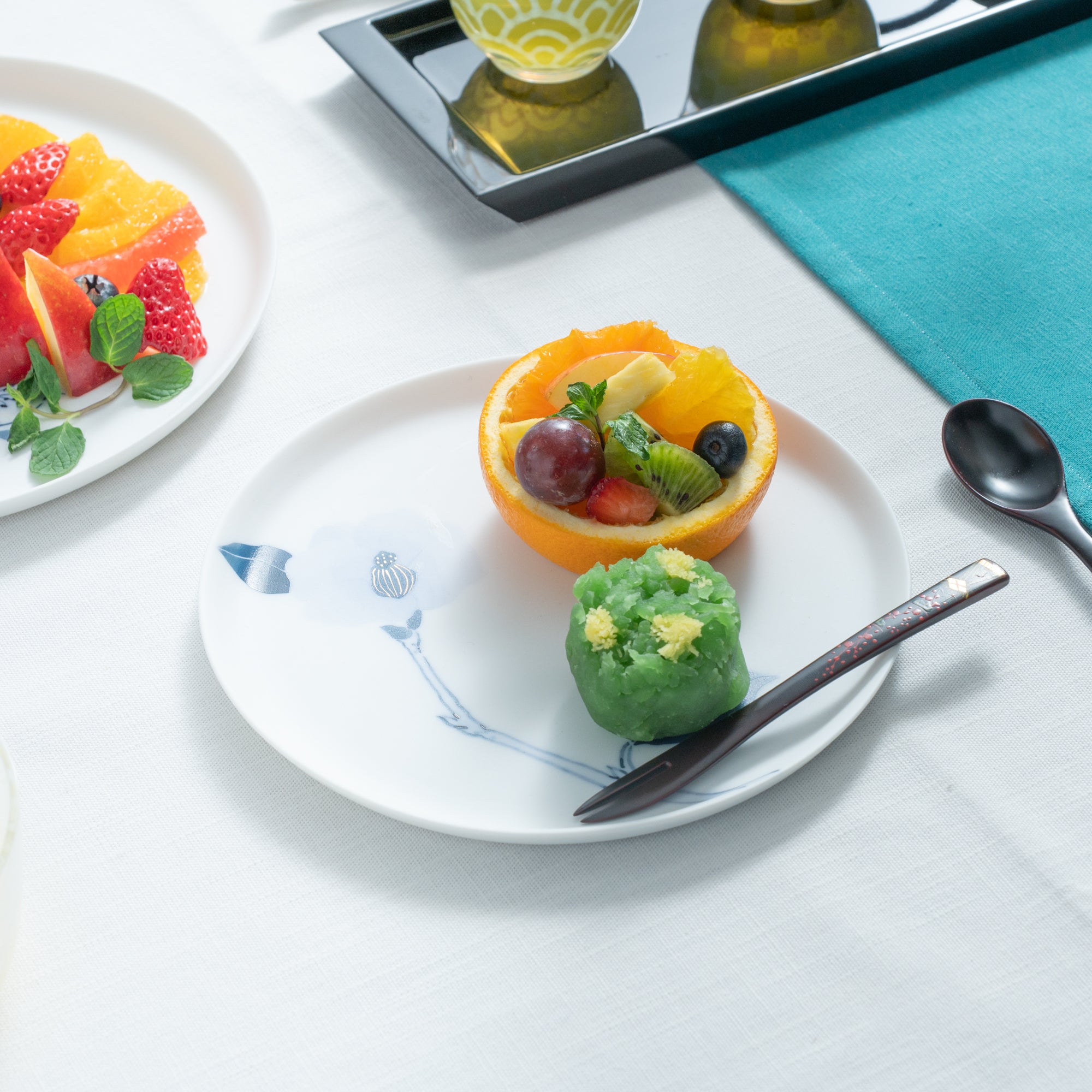
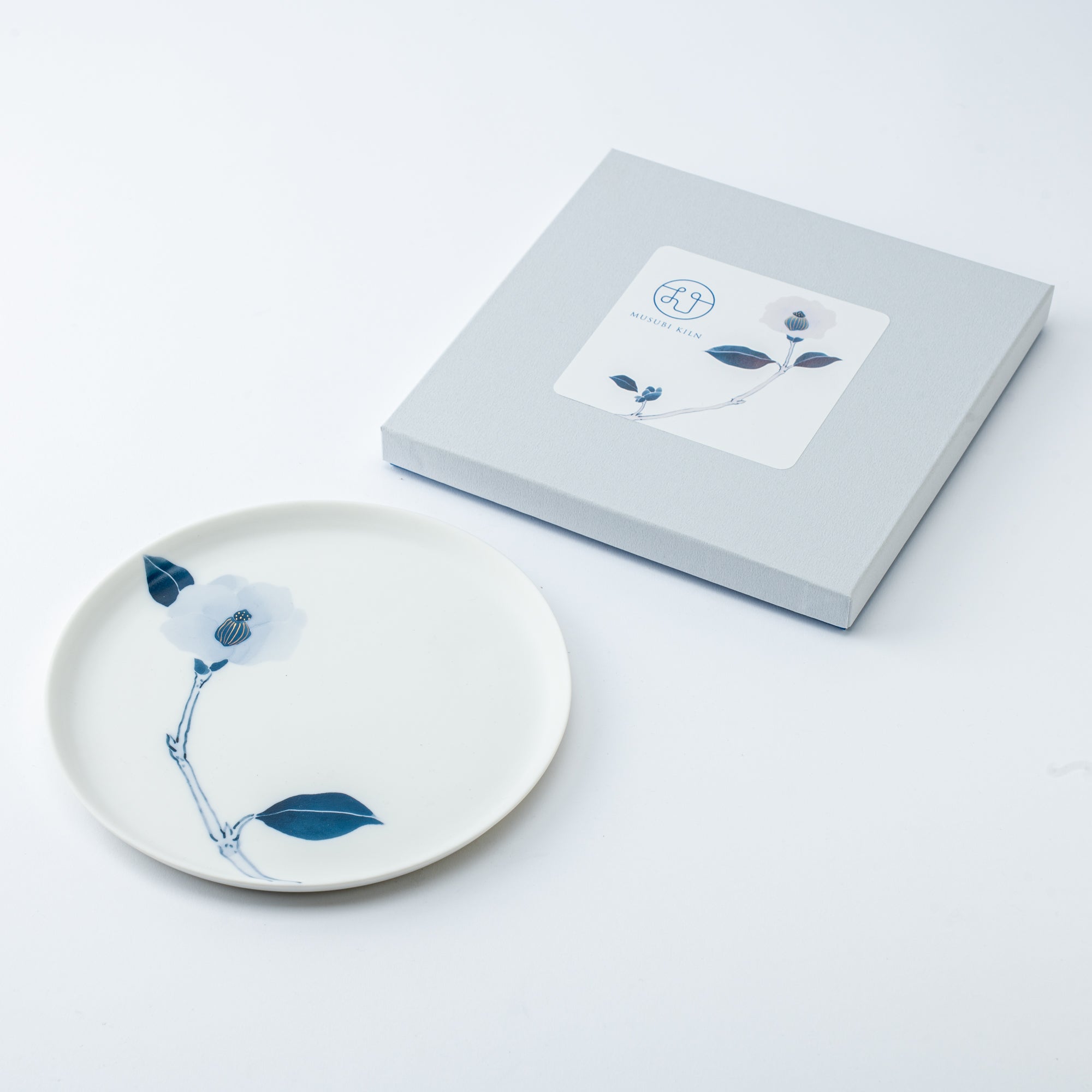
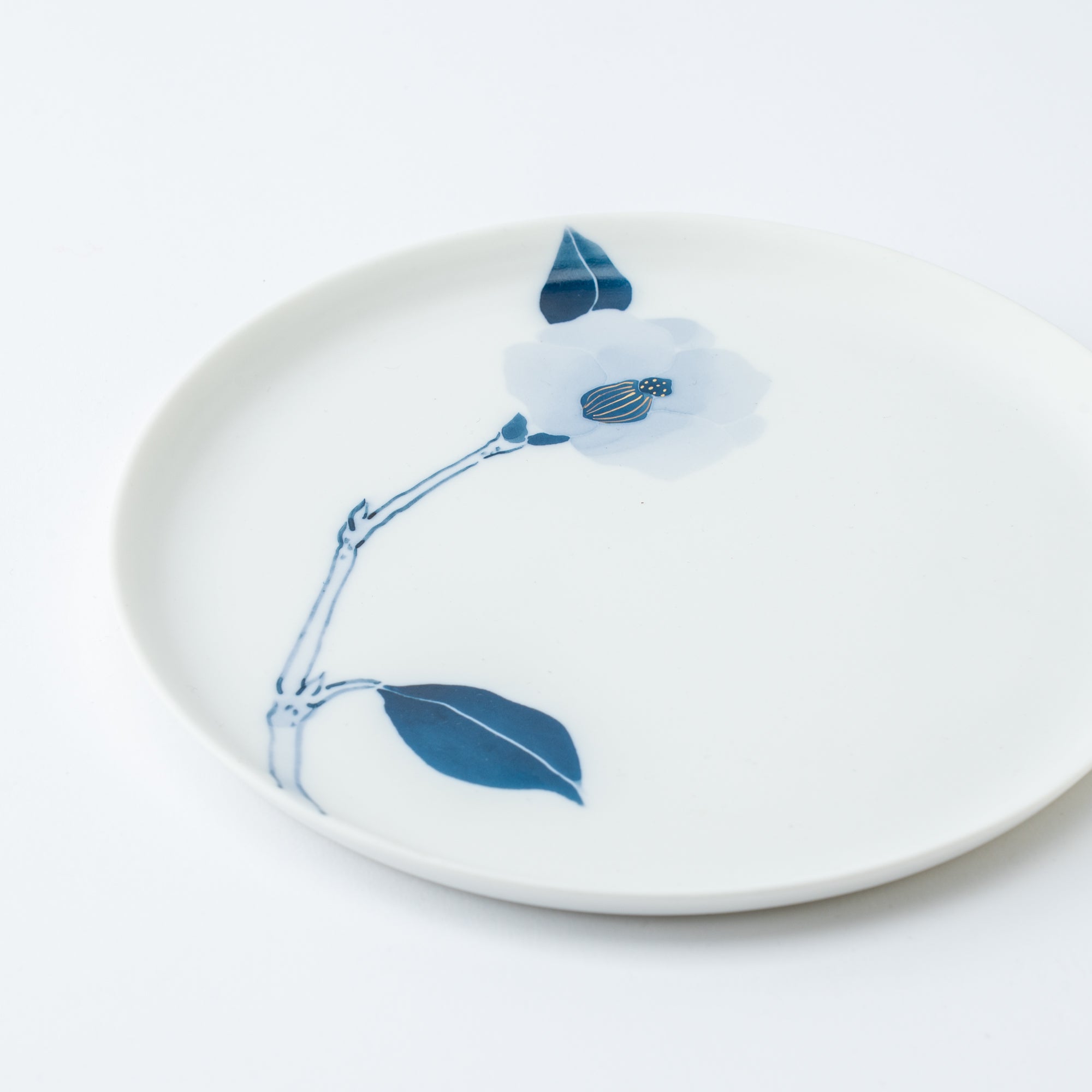
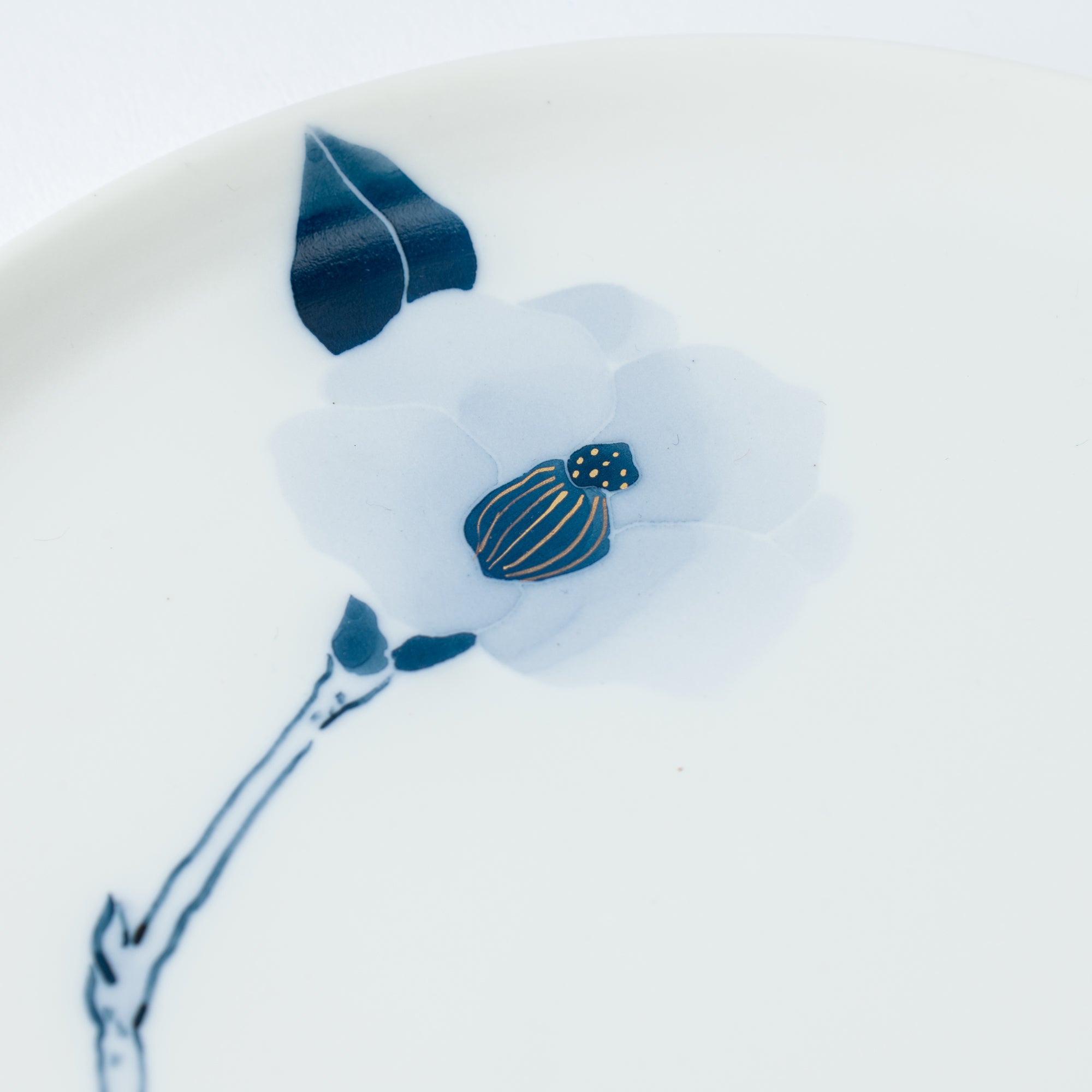
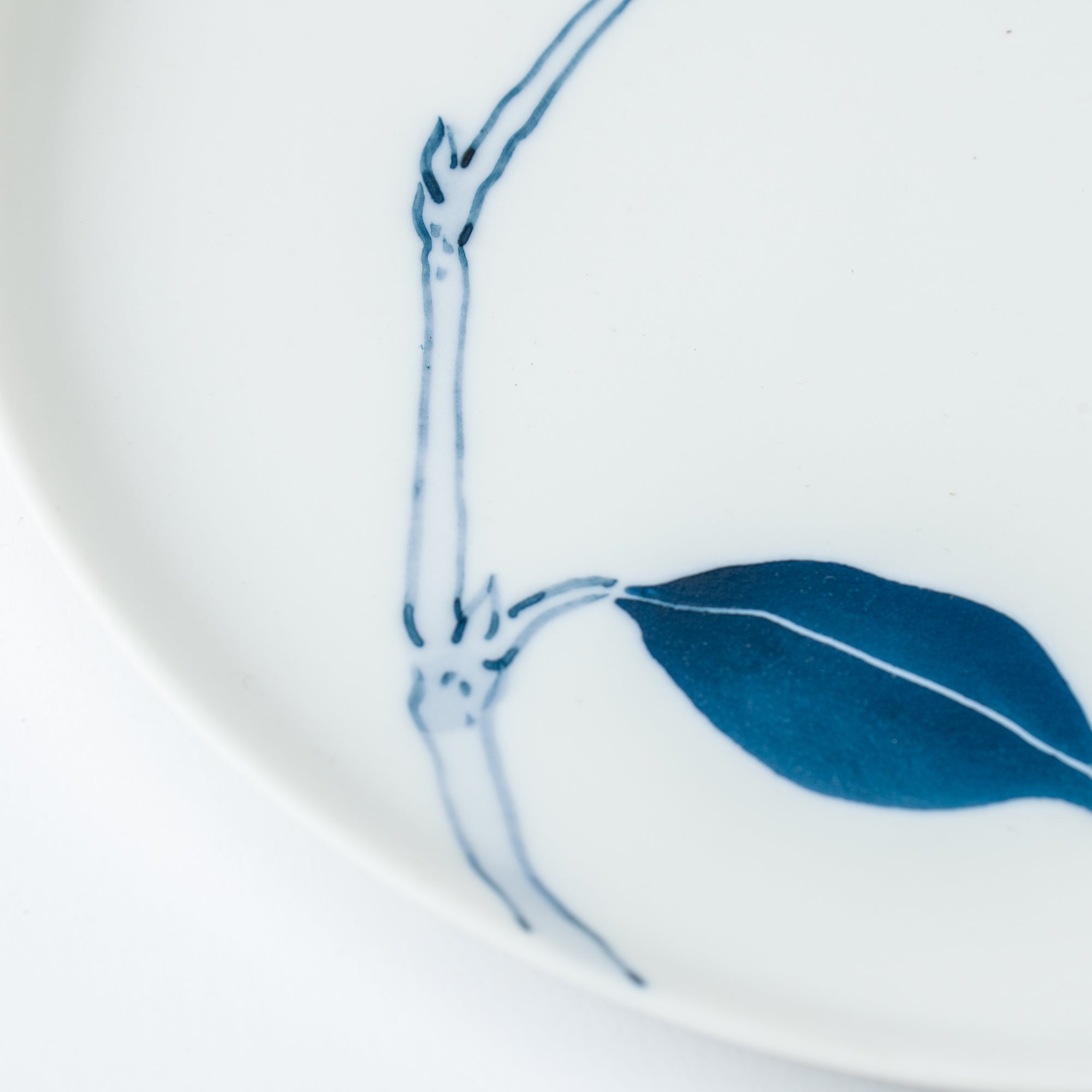
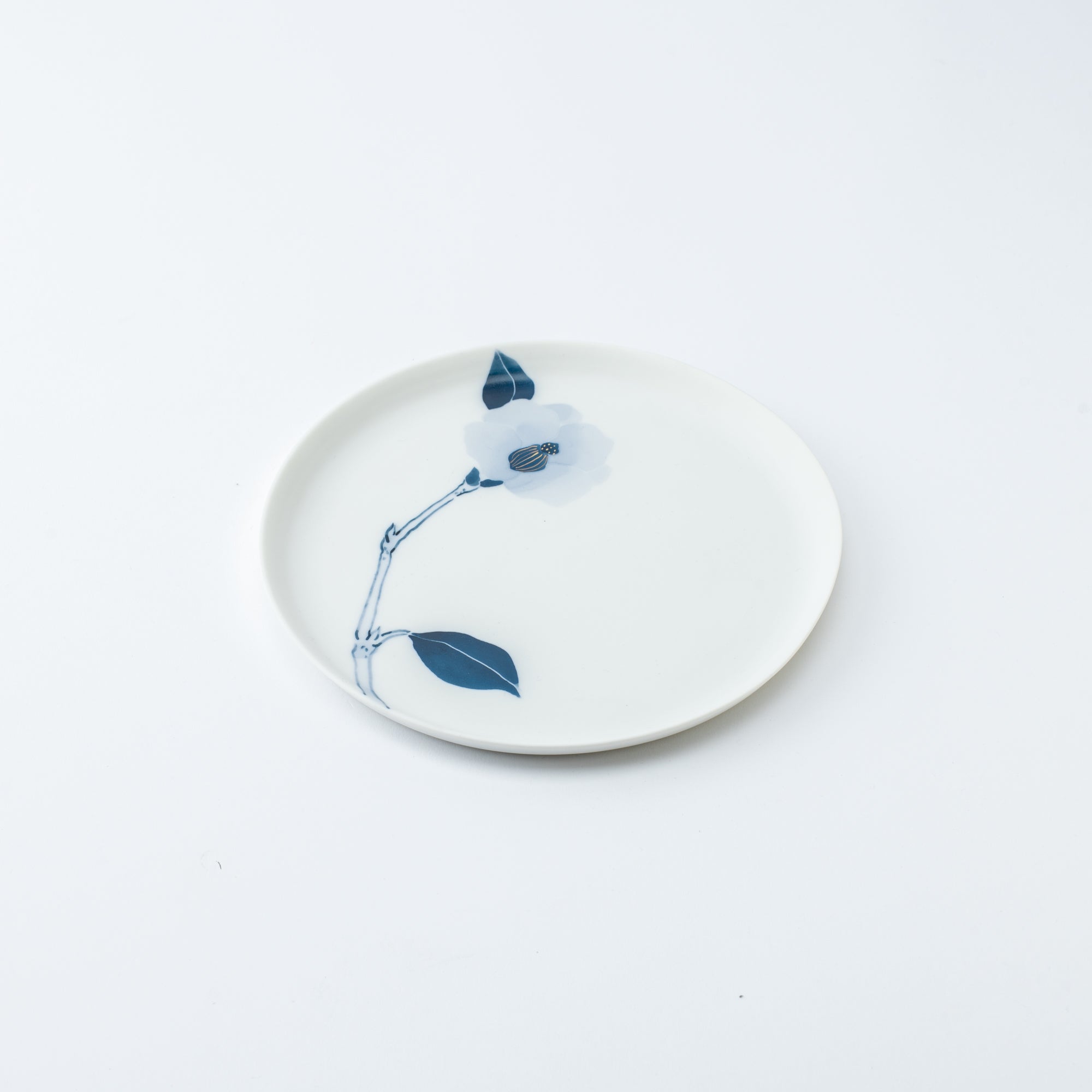
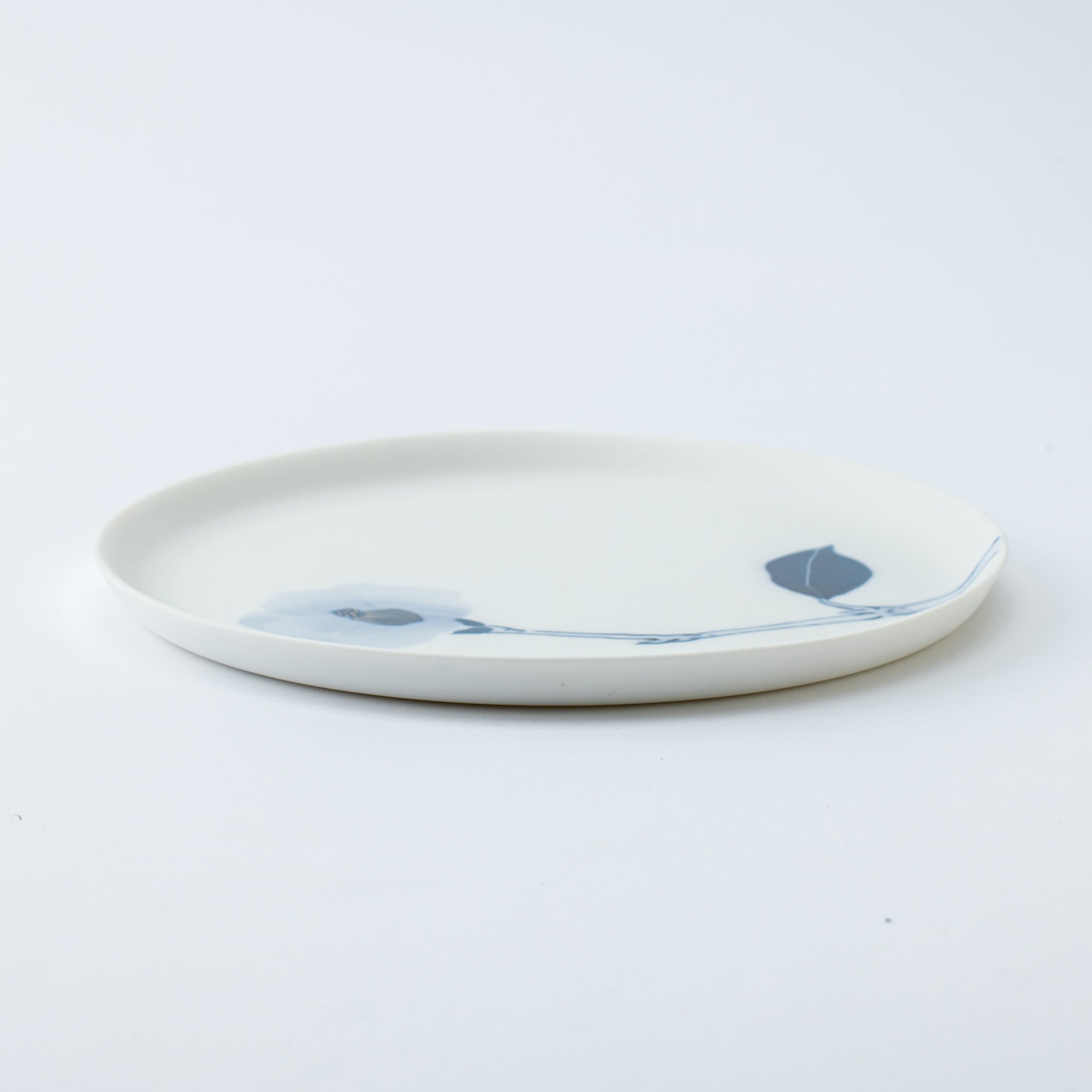
Blau Blumen-Kamelien-Beilagenteller
Estimated Shipping Widget will be displayed here!
Bringen Sie die Schönheit der Kamelie auf Ihren Tisch mit diesem blau-weißen Beilagenteller aus Porzellan, verziert mit Seto Sometsuke– der ikonische blau-weiße Stil. Ein einzelner Zweig wölbt sich über die Oberfläche, gekrönt von einer blühenden Kamelie und tiefblauen Blättern, ein originelles Design für Musubi Kiln. Dünne Goldlinien fallen ins Auge und verleihen der zurückhaltenden Palette einen sanften Schimmer.
Das Blumenmuster ist mit einem dicken Pinsel handgemalt. gosu, ein Kobaltpigment. Diese traditionelle Technik ermöglicht subtile Farbvariationen – von tiefem Indigo bis zu blassem Blau – und fängt die sanfte Schichtung jedes Blütenblatts und Blattes ein. Zarte Blätter strecken sich nach außen und verleihen der floralen Komposition Bewegung, die durch die ruhige Hand und das raffinierte Können eines erfahrenen Kunsthandwerkers zum Leben erweckt wird.
Dieser Beilagenteller setzt Akzente auf Ihrem Tisch – dezent in der Form, aber eindrucksvoll in den bemalten Details. Der niedrige Rand setzt jedes Gericht gekonnt in Szene – egal, ob Sie eine Vorspeise oder ein Stück Ihres Lieblingsdesserts servieren. Das seitlich platzierte Kamelienmotiv lädt zudem zu kreativen Anrichten ein, die mit dem Negativraum spielen. Verpackt in einer passenden Box im gleichen Design ist er ein schlichtes, durchdachtes Geschenk.
EINZELHEITEN
| Quantity |
1 |
| Size | D 18.5 cm (7.3 in) x H 1.2 cm (0.5 in) |
| Weight | 230 g (8.1 oz) |
| Material | Porcelain |
| Package Type | Paper box |
| Microwave | No |
| Dishwasher | No |
Hersteller / Marke
SINGAMA wurde 1919 gegründet und ist ein familiengeführtes Töpferstudio in Shinano, einer kleinen Stadt in den nordöstlichen Hügeln der Stadt Seto in der Präfektur Aichi. Das Studio verwendet hochwertigen lokalen Ton und ist spezialisiert auf Seto Sometsuke– weißes Porzellan mit sanften, indigoblauen Mustern. Jedes Stück ist handbemalt und strahlt mit seinen sanften Formen und der Wärme, die es auf dem alltäglichen Tisch ausstrahlt, Behaglichkeit aus.
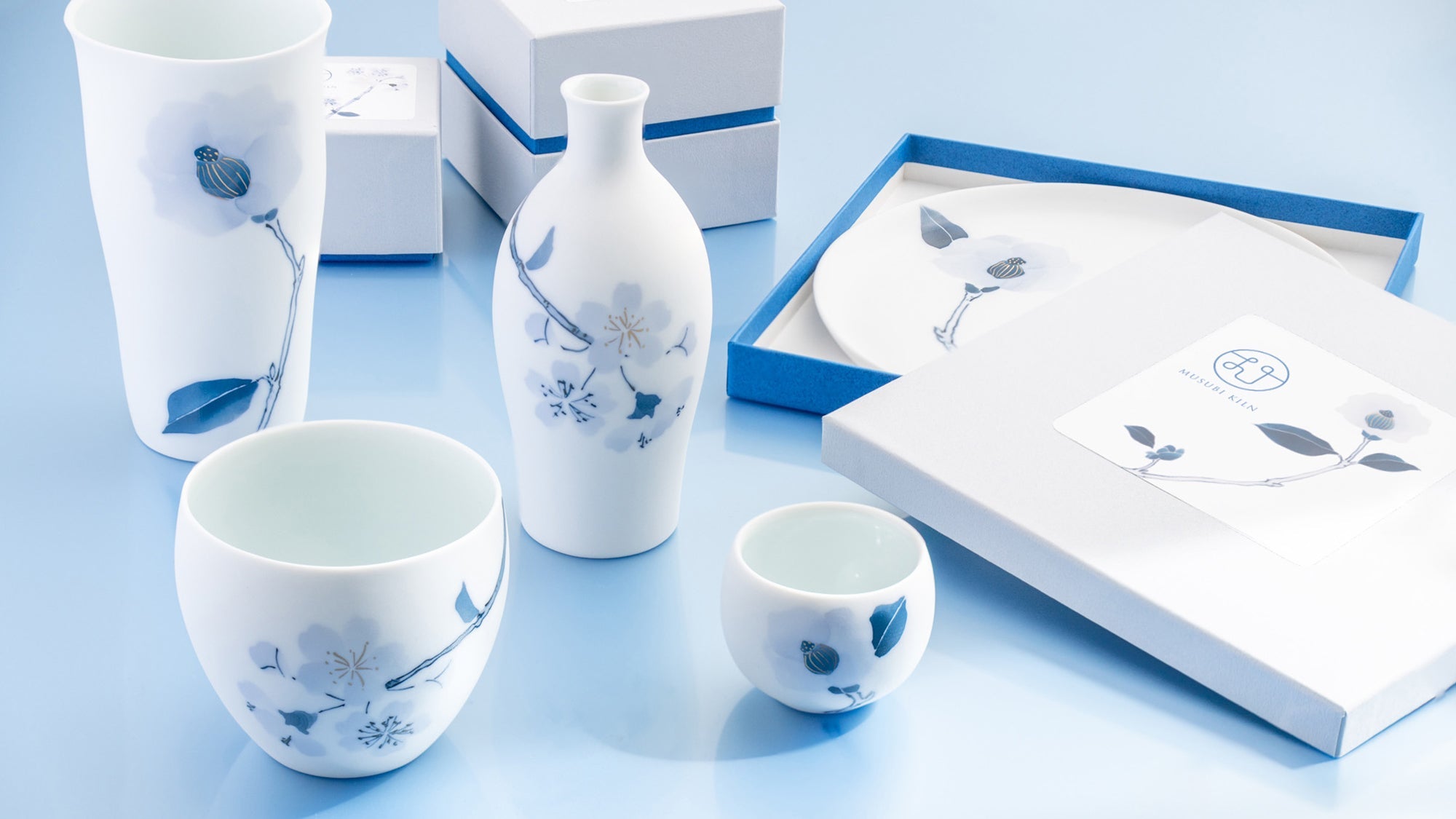
Kunsthandwerk
Seto-Ware wird in und um Seto City in der Präfektur Aichi hergestellt und umfasst eine breite Palette an Keramiken, die Jahrhunderte der Handwerkskunst und Innovation widerspiegeln. Als einer der sechs alten Brennöfen (Rokkoyo) Japans nimmt die Region Seto einen herausragenden Platz im keramischen Erbe des Landes ein. Sie war auch ein Pionier in der Massenproduktion von Porzellan, und ihre weite Verbreitung führte zum Wort setomono– ein Begriff, der auch heute noch allgemein für Keramik verwendet wird.
Seto ist eine der wenigen Regionen Japans, in der sowohl Steingut als auch Porzellan hergestellt werden und zeichnet sich durch eine bemerkenswerte stilistische Vielfalt aus. Von einfachem Alltagsgeschirr bis hin zu edleren Stücken prägt Seto-Keramik den Alltag mit Kreationen, die Tradition und Kreativität in Einklang bringen.
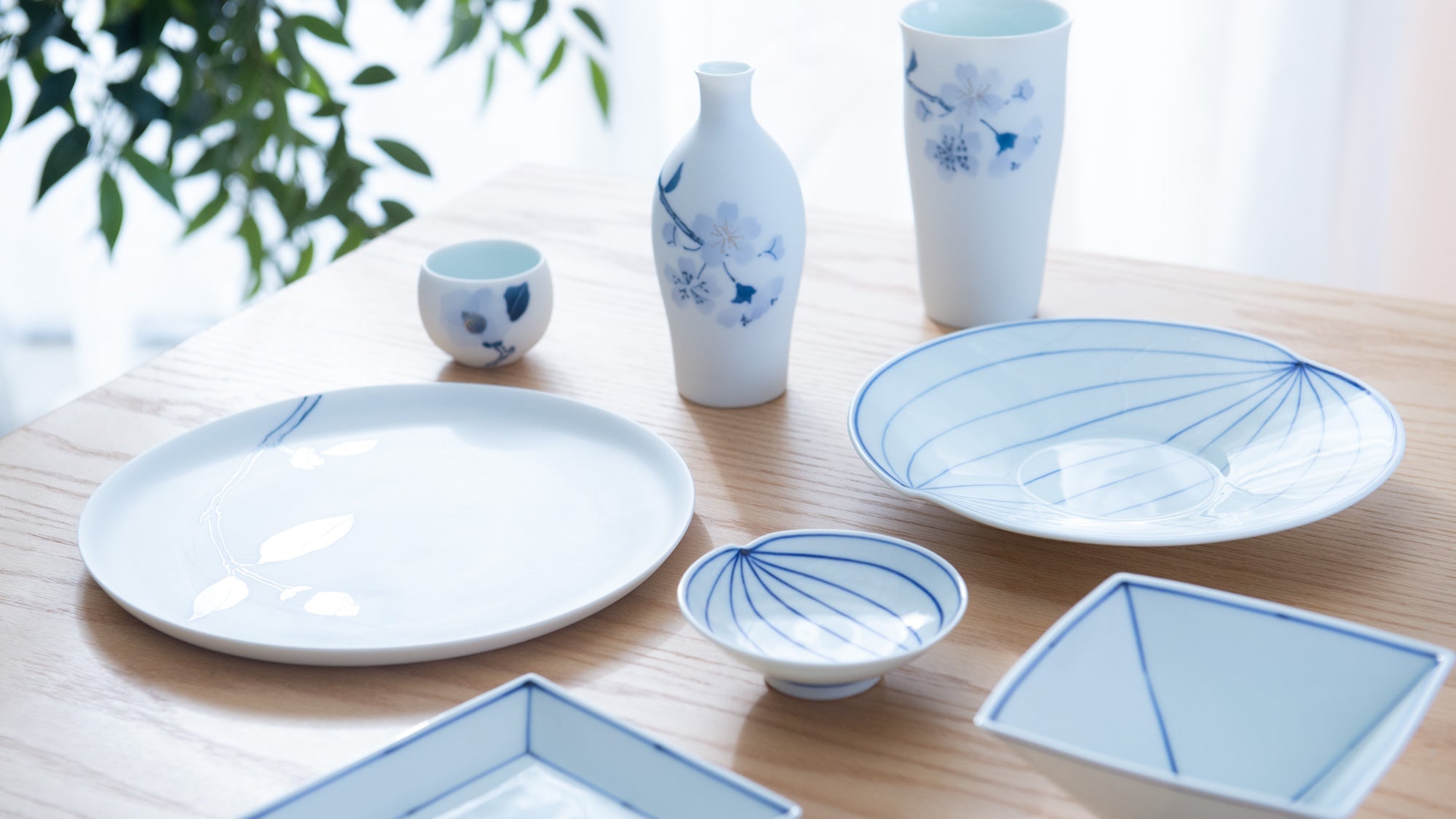
Anmerkungen
Optionen auswählen







Estimated Shipping Widget will be displayed here!
Seitenplatten
Verleihen Sie Ihrem Tisch mit unserer Kollektion japanischer Beilagenteller, fachmännisch gefertigt von Kunsthandwerkern aus ganz Japan, ein Gefühl von Qualität. Die kleinen Teller in unserer Auswahl sind ein Schlüsselelement einer authentischen japanischen Tischdekoration und passen zu jedem Einrichtungsstil, von niedlich und farbenfroh bis klassisch und raffiniert. Diese Gerichte präsentieren Vorspeisen, Snacks, Brot, Süßigkeiten und Beilagen wie Tofu, Salat oder sogar Fischscheiben mit Leichtigkeit und Stil.
Diese Kategorie umfasst Teller mit Durchmessern von 13–20,9 cm (5,1–8,2 Zoll).
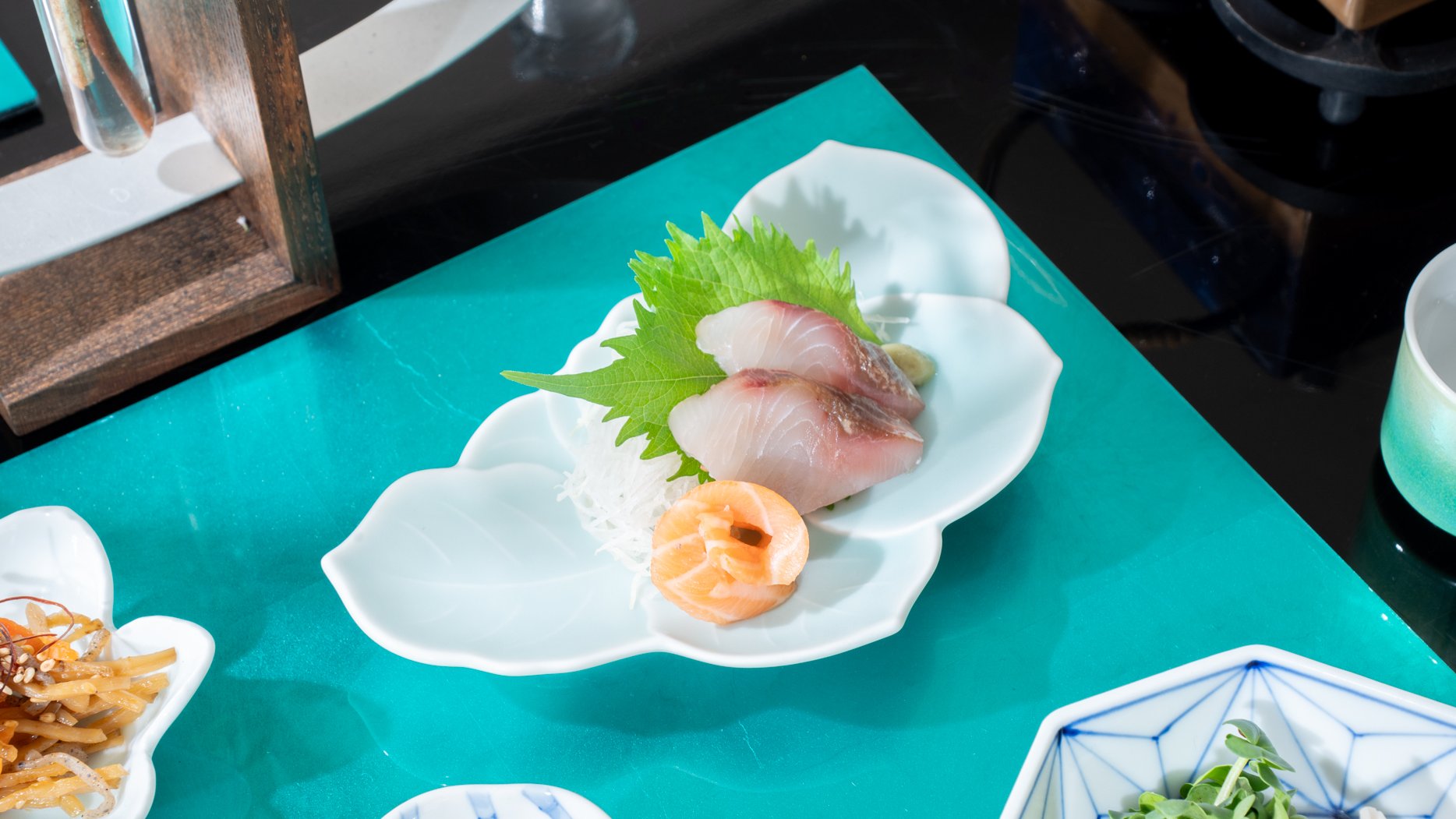
Kamelie
Die Kamelie, ein in Japan heimisches Glückssymbol, blüht vom Winter bis zum frühen Frühling in leuchtenden Farben. In Shinto-Ritualen verehrt und als heiliger Baum angesehen, ist sie aufgrund ihrer immergrünen Natur und ihrer Rolle bei der Begrüßung des Frühlings ein beliebtes Glückssymbol. Entdecken Sie den Charme der Kamelie mit unseren Motivartikeln, die dieses traditionelle japanische Symbol würdigen.


